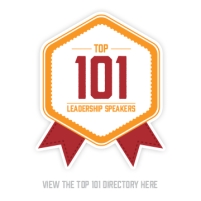Yesterday it was Independence Day – 4th of July. An important day for America. I was reading mails and tweets from American friends and got inspired by it to write this short piece. I am not American, but maybe my Dutch ancestry plays a role here. The desire for independence has always been important in our history and culture. What inspires me particularly is how a group of remarkable leaders can create such a level of ‘relatedness’ or ‘alignment’ that they inspire a whole nation to follow and to take their future in their own hands.
Just read the Declaration of Independence and imagine the times and the context in which it was drafted by Thomas Jefferson in 1776 together with John Adams, Benjamin Franklin, Roger Sherman and Robert R. Livingston. The Declaration of Independence is more than just a document. It emerged not only from anger and from a desire to free itself from the British yoke for the sake of becoming independent. It is a declaration of will, of vision and of values for a better society. The ones who wrote it were not so much trying to get rid of Britain, they wanted to create something new and better. They took charge over their destination. They could only do this by showing real leadership together and by being strongly aligned on what they wanted to create. Their message inspired a nation to arise, and it still inspires people today.
“The purpose is not to find out new principles, or new arguments, never before thought of, not merely to say things which had never been said before; but to place before mankind the common sense of the subject, in terms so plain and firm as to command their assent.” – Thomas Jefferson (Made in America, Bill Bryson, 1994)
Another historic example of leaders who created alignment took place in May 1950 in Paris. World War Two was still very fresh in everybody’s memory. Europe was rebuilding itself. It was in those days that Robert Schuman (foreign minister of France) and Konrad Adenauer (Chancellor of postwar West-Germany) inspired by Jean Monnet (senior French diplomat) launched an ambitious, and in the eyes of many an impossible plan: put the Franco-German production of coal and steel under a common High Authority (whose decisions will bind France and Germany), within the framework of an organization open to the participation of the other countries of Europe. This was not just about increasing economical revenues, this was about creating a foundation for a European federation that would exchange a history of enmity for a future of friendship. It was an example of great leadership courage and strong alignment. It was the foundation on which the European Union is built.
“It is not feelings of friendship that create a community, but conversely, that working together creates friendship.” – Jean Monnet (The 50 Days that Changed Europe, Hanneke Siebelink, 2011)
What I take away from these two examples: Creating alignment is creating a sense of relatedness based on the strengths of the individual qualities. It is about being able to act as one just because we respect our mutual uniqueness.
Photo (top): Cliff1066/Flickr (Creative Commons)___________________
As international business consultant, change leader, alignment facilitator and executive coach Aad supports companies, their executives and leadership teams to increase their business success. He works with his clients on leading complex change, cross-cultural leadership, post-merger integration, and amplifying business performance. Find out more about Aad and his services.
Related articles
- Post Merger Integration: Cultural Alignment is a Prerequisite for Value Creation. (leadershipwatch-aadboot.com)
- Leading Multinational Companies: Three Significant Changes in the Role of Senior Leaders (leadershipwatch-aadboot.com)
- Cross-Cultural Leadership: How Misinterpretations of Dishonesty Can Destroy Team Alignment (leadershipwatch-aadboot.com)












